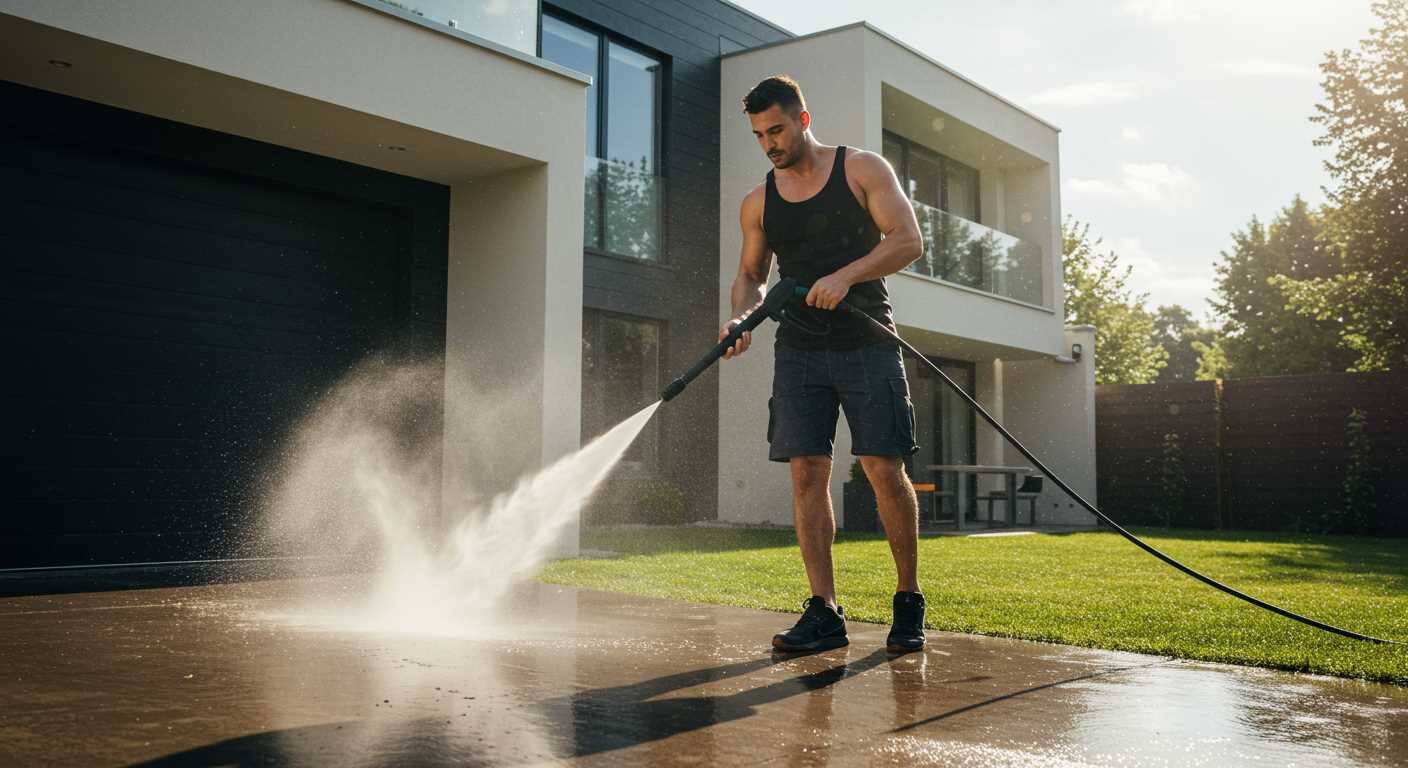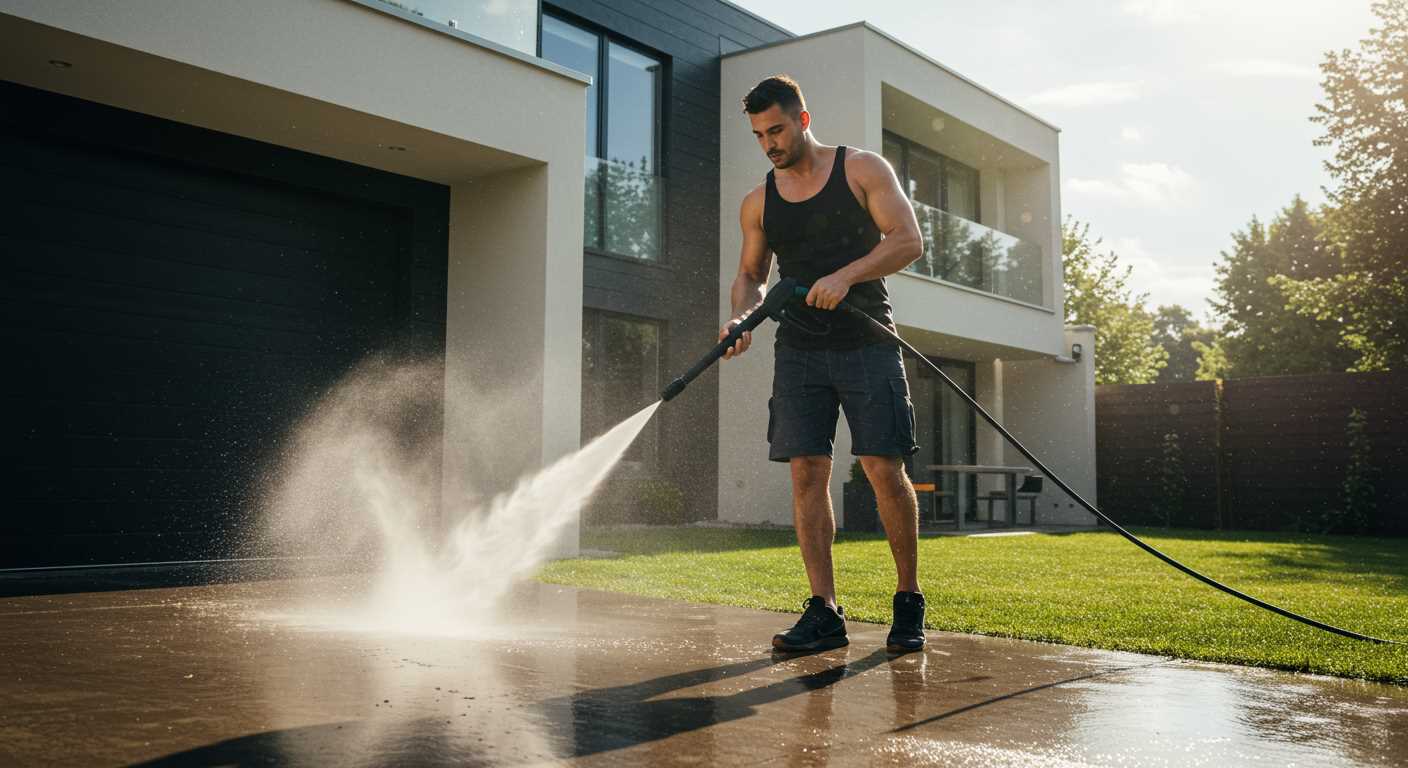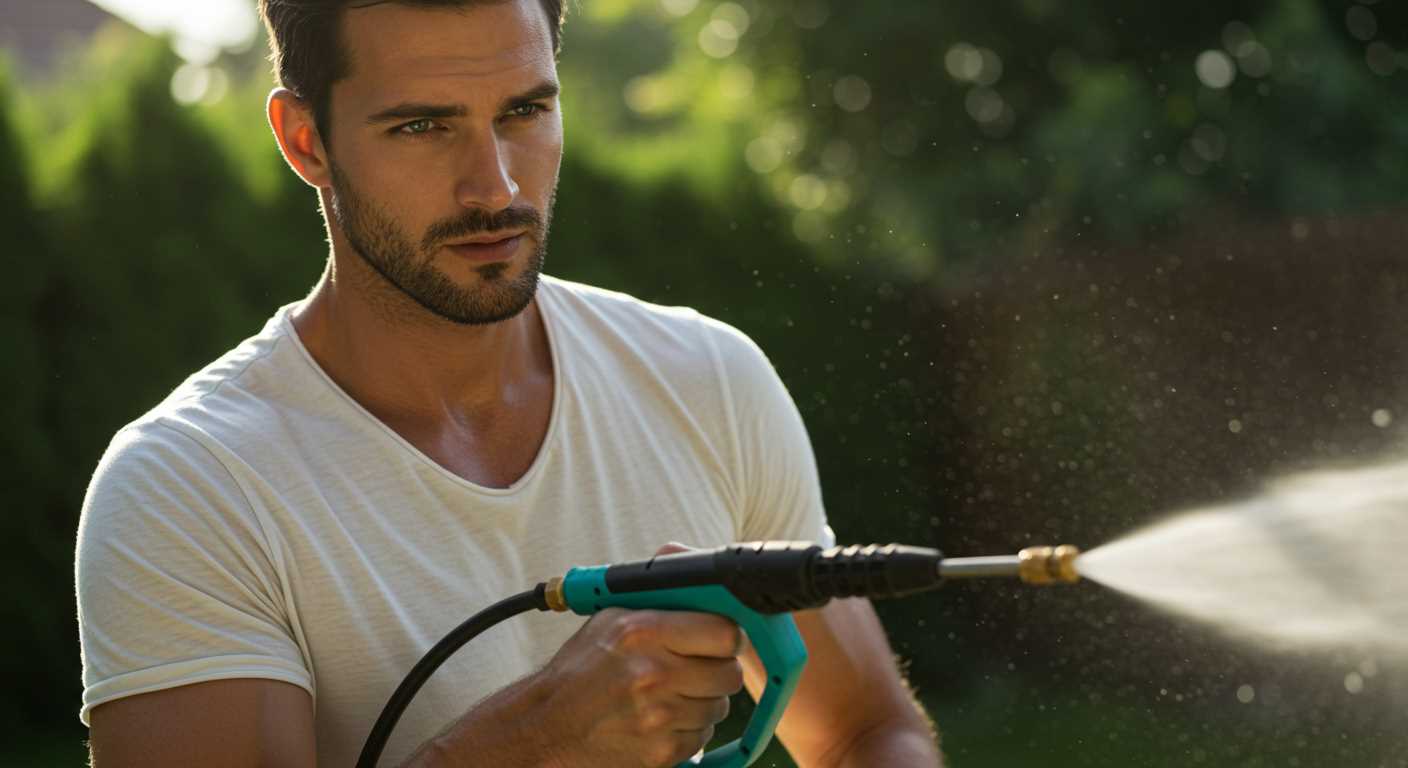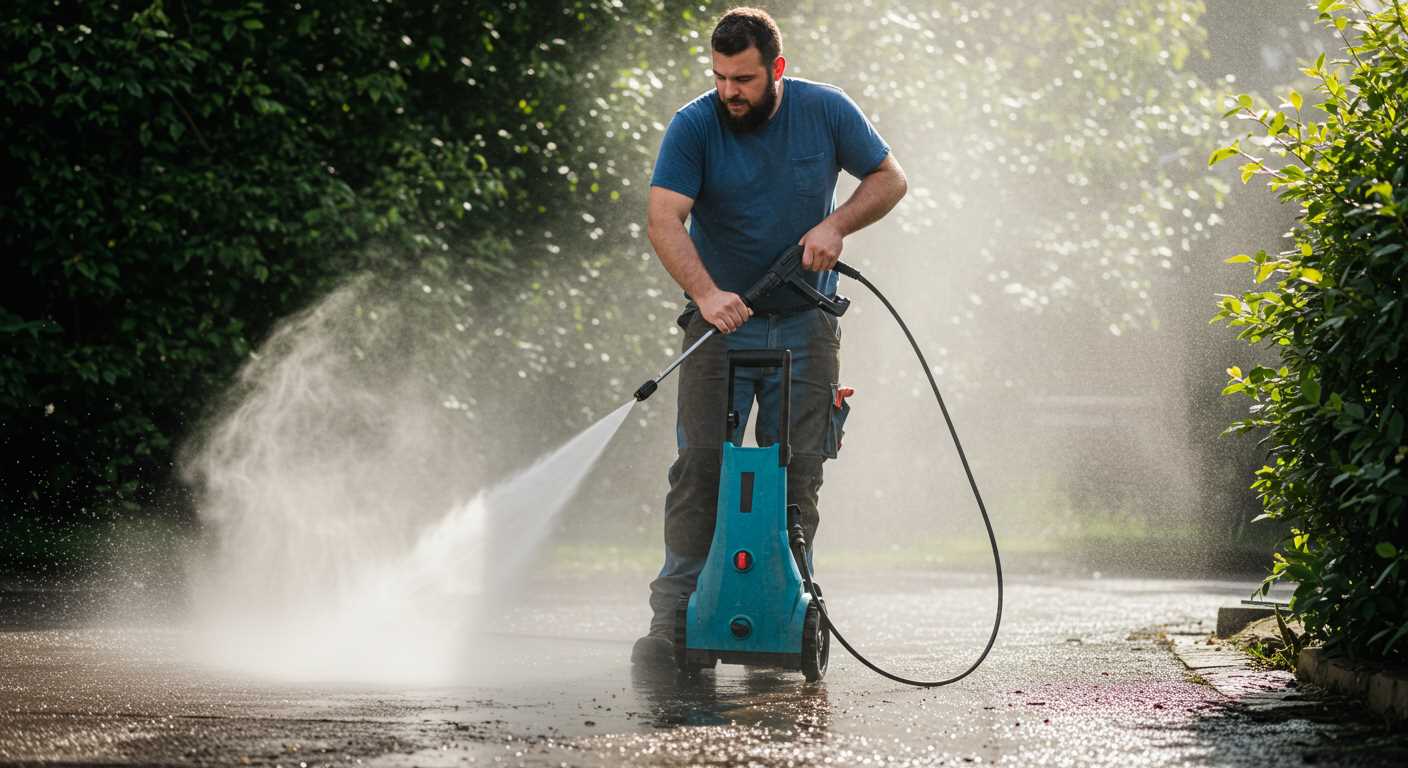




For most domestic tasks, a model with a rating between 1300 and 2000 PSI will suffice. This range is powerful enough to handle typical cleaning jobs like driveways, patios, and vehicles without causing damage. In my experience, anything below 1300 PSI struggles with tougher grime, while devices exceeding 2000 PSI can be overkill for standard household needs.
When tackling stubborn stains or larger areas, consider a unit in the 2000 to 3000 PSI range. I recall a project where I needed to strip paint from an old fence; a 2500 PSI machine made quick work of it without causing wood damage. Each task may require different specifications, so understanding the job at hand is key.
Flow rate is another crucial aspect; aim for at least 1.5 GPM to ensure optimal performance. A higher flow rate helps rinse away dirt more effectively, particularly when dealing with muddy or oily surfaces. I’ve found that units with 2.0 GPM or more offer a noticeable improvement in efficiency.
Lastly, consider the nozzle types available. A 0-degree nozzle delivers a concentrated stream for tough stains, while a 25-degree nozzle is more versatile for general cleaning. Always choose the right tool for the task to avoid unnecessary wear on surfaces and equipment.
Understanding Pressure Ratings: PSI Explained
A minimum of 1500 PSI is typically recommended for light domestic tasks, such as cleaning garden furniture or vehicles. For moderate jobs like driveways or patios, consider equipment rated around 2500 PSI. For tougher jobs, such as stripping paint or removing stubborn grime, opt for units that deliver upwards of 3000 PSI.
Breaking Down PSI Ratings
PSI, or pounds per square inch, indicates the force of water emitted by the machine. Higher ratings correspond to greater cleaning power. During my years in the industry, I witnessed the difference first-hand; a machine rated at 3500 PSI tackled concrete stains that a 2000 PSI unit struggled with. However, not all tasks require the highest ratings. Using excessive force on delicate surfaces can lead to damage. I remember a client who accidentally stripped paint off their wooden deck while attempting to clean it with a model designed for heavy-duty tasks.
Choosing the Right Equipment
When selecting a model, consider the specific surfaces you’ll be cleaning. For instance, vehicles and softer materials perform better with lower PSI settings to avoid scratches. In contrast, brick and concrete benefit from higher ratings. During my tenure, I often advised clients to balance their needs with the appropriate PSI to achieve optimal results without risk of harm. Always refer to manufacturer recommendations and consider testing on a small area first when unsure.
Choosing the Right Pressure for Different Surfaces
For delicate surfaces like car paint, using a setting around 1200 to 1900 PSI works well. I recall a time when I cleaned my old sedan with a lower setting, and it was effective in removing grime without risking any scratches. Always maintain a distance of at least two feet to ensure a gentle touch.
Concrete driveways and patios require a stronger approach. A range of 2500 to 3000 PSI gets the job done efficiently. I vividly remember tackling my driveway, which had years of accumulated dirt. The higher setting made quick work of the stains, leaving it looking new again.
For wooden decks, it’s advisable to stay within 1500 to 2000 PSI. I once had a customer who used a higher setting and ended up damaging the wood. A lower force helps preserve the integrity of the surface while effectively removing dirt and mildew.
Bricks and stone surfaces can handle a more robust force, typically around 3000 PSI. When I worked on a stone patio, this setting allowed me to blast away stubborn moss and algae without any issue. Always use a fan nozzle to spread the force evenly and avoid chipping.
Lastly, for vinyl siding, a range of 1300 to 1600 PSI is ideal. I remember cleaning my neighbour’s house and being cautious with the settings to avoid damaging the siding. Keeping a safe distance and using a wider spray pattern made all the difference.
Calculating Required Force for Your Cleaning Task
To determine the necessary force for a cleaning assignment, start by evaluating the surface type and the nature of the dirt or grime. For example, light tasks such as washing a car or cleaning garden furniture often require around 1,300 to 1,600 PSI. In contrast, for more stubborn stains on concrete or brick, a range of 2,000 to 3,000 PSI is generally advisable.
Next, consider the nozzle type. A narrow spray pattern concentrates the force, making it ideal for tough jobs. Conversely, a wider spray is suitable for delicate surfaces, requiring lower levels of intensity. Testing different settings on a small, inconspicuous area can help gauge the appropriate level without risking damage.
Assessing Dirt Type and Surface Material
Different materials react uniquely to varying intensities. For instance, wood requires caution. A lower force around 1,200 to 1,500 PSI is often sufficient to clean decks without causing damage. On the other hand, metal surfaces can withstand higher levels, typically 2,000 PSI or more, depending on the finish and condition.
Practical Testing Techniques
I recommend conducting a test patch if unsure. Begin with a lower setting and gradually increase until achieving the desired clean. This approach not only preserves the surface but also saves time and effort in the long run. Over the years, I’ve found that patience often yields the best results, especially with varied cleaning tasks.
Common Uses and Their Corresponding Pressure Needs
For cleaning vehicles, aim for a range of 1200 to 1900 PSI. This is perfect for removing dirt and grime without damaging paintwork. A car wash high pressure washer is ideal for this task, ensuring a thorough clean while being gentle on the surface.
Patios and decks typically require 2000 to 3000 PSI. The wood or concrete surfaces can withstand higher force, making it effective for tough stains like algae and grease. I’ve found that using a fan nozzle attachment helps distribute the force evenly.
For cleaning siding, a moderate 1500 to 2500 PSI is suitable. This power effectively removes dirt without causing harm to the materials. Regular maintenance with the right settings can prolong the life of your exterior finishes.
Driveways demand a higher output of 3000 to 4000 PSI. Concrete and asphalt are robust enough to handle this intensity, especially for oil spots and embedded dirt. I’ve seen remarkable results when tackling particularly stubborn stains.
When dealing with vehicles, patios, or decks, always consider the surface material. Adjusting the pressure according to the task not only enhances the cleaning process but also protects the surfaces from damage.
Impact of Nozzles on Cleaning Performance
Choosing the right nozzle can significantly enhance cleaning results. Each nozzle type alters the water stream’s shape and intensity, directly affecting its performance on various surfaces. For instance, a 0-degree nozzle delivers a concentrated, powerful jet ideal for tough grime on hard surfaces. However, using it on softer materials can cause damage.
Wider nozzles, such as 25 or 40 degrees, disperse water over a larger area. This is particularly useful for washing vehicles or delicate surfaces like wood decks. I recall a time when I mistakenly used a narrow nozzle on a wooden fence; the result was not pretty. Switching to a wider option transformed the project, allowing for effective cleaning without harming the wood.
Adjustable nozzles offer versatility, allowing users to switch spray patterns quickly. This adaptability is beneficial for tackling different tasks without needing to change equipment constantly. I often recommend these for homeowners who want a single solution for multiple cleaning jobs.
Matching nozzle choice with the specific task is crucial. For instance, using a rotating nozzle can enhance cleaning efficiency by combining the benefits of a narrow and wide spray, making it ideal for stubborn stains. I’ve found that this type can reduce cleaning time significantly on surfaces like driveways.
In essence, the nozzle significantly influences not just the cleaning power but also the safety of the surfaces being cleaned. Understanding the relationship between nozzle types and cleaning performance can lead to better results and a more satisfying experience. Always consider the task at hand and choose wisely to avoid mishaps and achieve optimal cleanliness.
When to Adjust Pressure for Safety and Damage Prevention
Adjusting your machine’s settings is critical to prevent injuries and avoid damaging surfaces. I remember a time when I was cleaning an old brick patio and I didn’t think twice about the settings I used. The result was chipped bricks and a costly repair. Here are some guidelines to help you avoid such mishaps.
Surface Sensitivity
- Delicate Materials: For surfaces like wood, always start at a lower setting. I found that using around 1200-1500 PSI is often sufficient for cleaning wooden decks without causing splintering.
- Painted Surfaces: If you are washing a painted surface, a gentle approach is best. Settings above 1500 PSI can strip paint. I once overshot this, and it took hours to repaint a fence.
- Concrete and Brick: These tougher materials can handle higher settings, usually between 2500-3000 PSI. However, I’ve seen even these surfaces damaged when too close to the nozzle.
Personal Safety Measures
- Protective Gear: Always wear safety glasses and gloves. I learnt this the hard way when a small stone hit my eye. A little precaution goes a long way.
- Nozzle Distance: Maintain a safe distance from the surface. I usually keep at least 12 inches away when using higher settings to avoid kickback injuries.
Choosing the right equipment also matters. For example, a best car wash high pressure spray gun can help manage the flow and intensity, making it safer to operate while achieving clean results.
Adjusting settings is not just about achieving clean surfaces; it’s about ensuring longevity and safety. Always take the time to assess the task at hand and modify accordingly.





.jpg)


